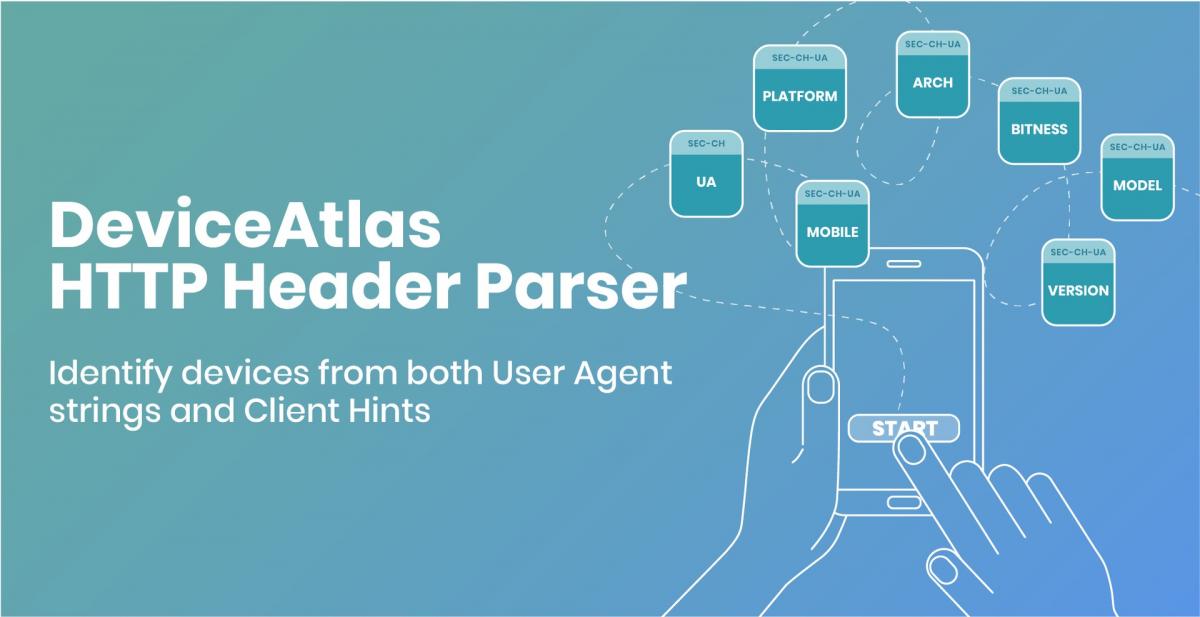
We are delighted to launch an update to our HTTP Headers Parser tool that can identify devices from both User-Agent strings and Client Hints to provide a comprehensive solution to the changing User-Agent Client Hints landscape.
DeviceAtlas continues to support our community with our update to the HTTP Headers Parser tool in addition to facilitating our upcoming Webinar: User-Agent strings and User-Agent Client Hints: navigating the new landscape. These resources supplement our support of both Client Hints and User-Agent Strings using real-time analysis, which maximises coverage across browsers. Read more about our plans in our previous blog post or learn more about the background to Client Hints and the history of User-Agents.
How does the HTTP Headers Parser work?
The HTTP Headers Parser is used to identify a device if populated and will fall back to identify a UA string if the Client Hints headers are not populated.
Benefits of the HTTP Headers Parser
This tool checks what DeviceAtlas returns for HTTP headers. You can paste in any headers (or just a user-agent string) or click current browser headers to return results for your browser. Client Hints headers are utilised where present, including hints from first and second requests.
Our support of Client Hints in addition to user-agent string real-time analysis maximises coverage across browsers. This ensures that the consumer experience of your brand is consistent across all devices, from entry level to premium, to maximise engagement and enhance and protect customer loyalty.
How to try it out
For a quick visualisation of how Client Hints headers are used by DeviceAtlas, visit DeviceAtlas’ HTTP Headers parser. This allows testing of any headers, or testing of the full headers of a browser used to visit the page.
Webinar
Join us on Thursday, 30 September at 3pm - 4pm BST (or catch up with the subsequent replay link) for our webinar User-Agent Strings and User-Agent Client Hints: navigating the new landscape to hear from our experts John Leonard, Director of Product Strategy, DeviceAtlas and Ronan Cremin, Chief Technical Officer. They will discuss how the UA-CH specification has evolved over time and outline the implications for online products and services. Participants will learn how to mitigate the impact of these changes while adding value to products and services based on deeper insights into the individual connections that can be provided by Client Hints.
DeviceAtlas’ support of both Client Hints and User-Agent identification continues to evolve in line with Google’s plans to deprecate and freeze UA strings. Sign up for a free trial today, or use our HTTP Headers Parser tool for an instant, secure header lookup that is trusted by market leaders worldwide. For a full evaluation, contact sales@deviceatlas.com.





